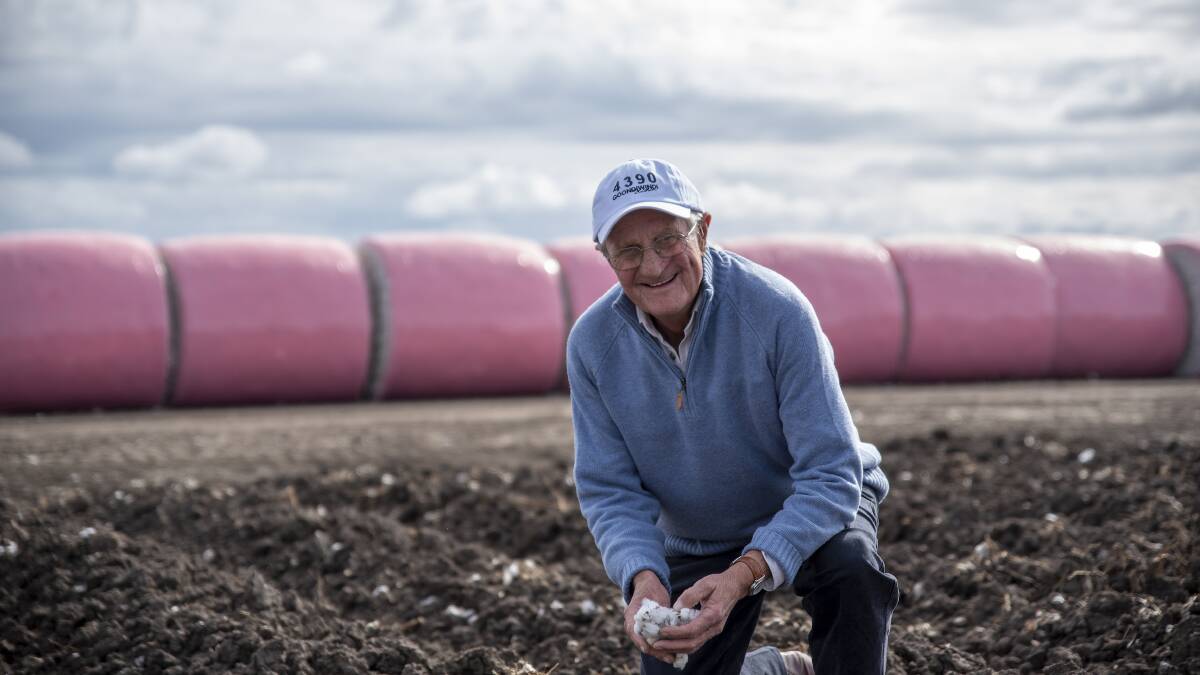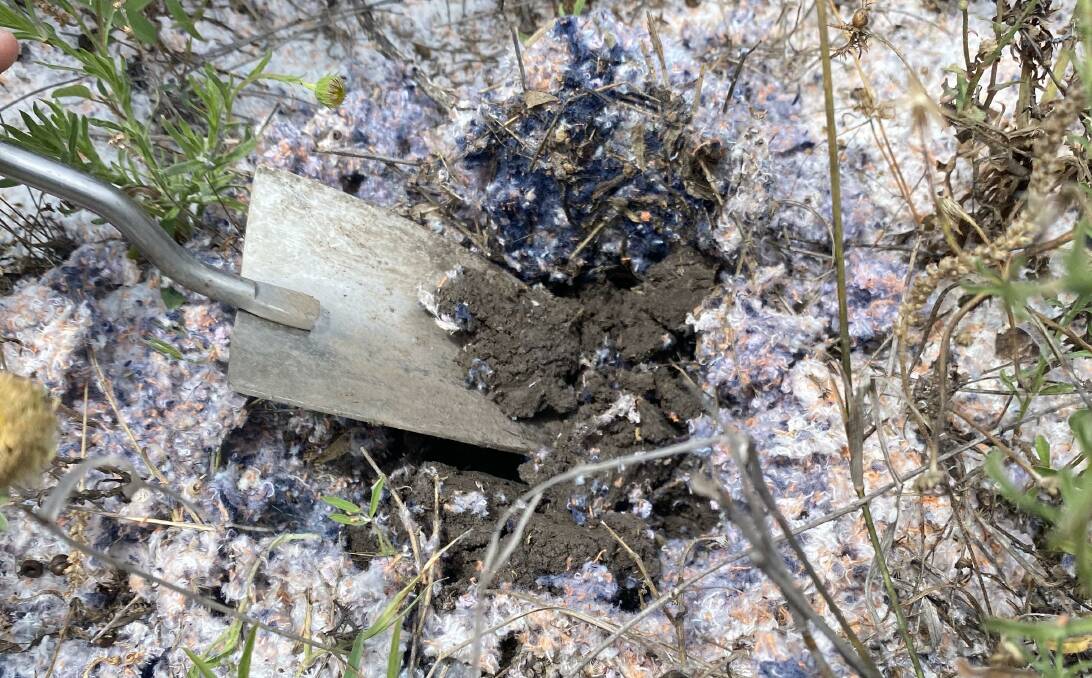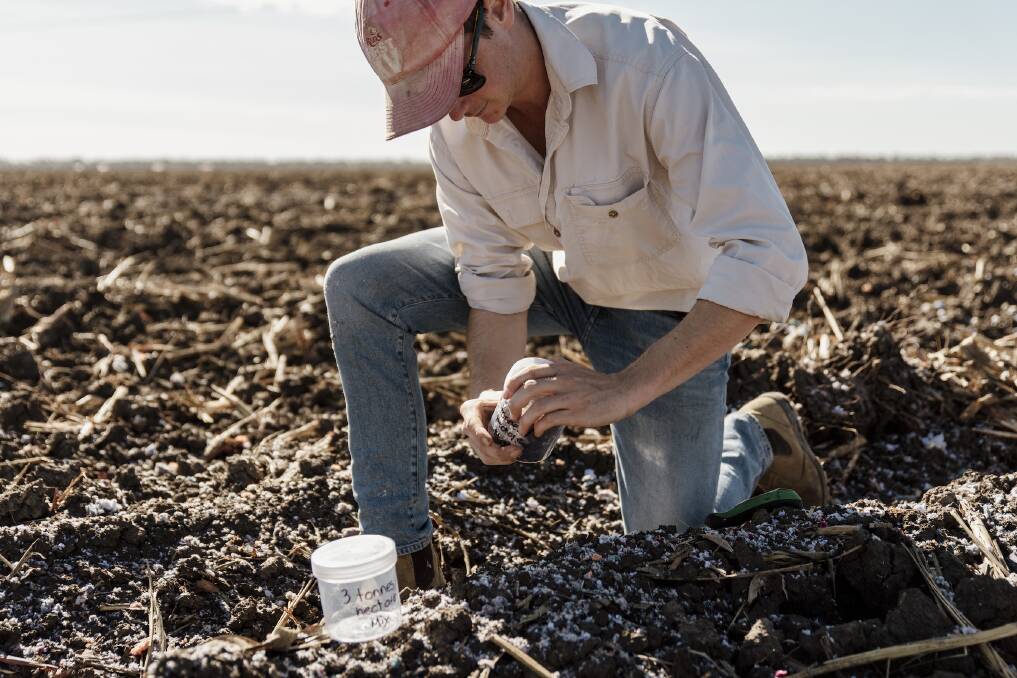
A 12 month trial on a Goondiwindi cotton farm has shown it's possible to incorporate large amounts of 'end of life' cotton textile waste into the ground with harming soil health or cotton yields.
Subscribe now for unlimited access to all our agricultural news
across the nation
or signup to continue reading
Moreover, project collaborators are confident that further research could see returning shredded cotton products to cotton fields could soon offer benefits to soil health, and a scalable solution to the massive global problem of textile waste.
Goondiwindi farmer Sam Coulton said the fields easily "swallowed up" the shredded cotton material, giving him confidence that this composting method had practical long term potential.

"We spread the cotton textile waste a few months before cotton planting in June 2021 and by January and the middle of the season the cotton waste had all but disappeared, even at the rate of 50 tonnes to the hectare," Mr Coulton said.
"I wouldn't expect to see improvements in soil health or yield for at least five years as the benefits need time to accumulate, but I was very encouraged that there was no detrimental impact on our soils.
"In the past we've spread cotton gin trash on other parts of the farm and have seen dramatic improvements in the moisture holding capacity on these fields so would expect the same using shredded cotton waste," he said.
Cotton industry supported soil scientist Dr Oliver Knox said at very least the trial showed that no harm was done to soil health.
"Microbial activity slightly increased and at least 2070kg of carbon dioxide equivalents mitigated through the breakdown of these garments in soil rather than landfill," Dr Knox said.
"The trial diverted around two tonnes of textile waste from landfill with no negative impact on cotton planting, emergence, growth or harvest.

"Soil carbon levels remained stable and the soil's bugs responded well to the added cotton material.
"There also appeared to be no adverse effect from dyes and finishes although more testing is needed on a wider range of chemicals to be absolutely sure of that."
Around two tonnes of end-of-life cotton textiles from Sheridan and State Emergency Service coveralls were processed at Worn Up in Sydney, transported to Alcheringa, and spread onto a cotton field.
The project, under the guidance of circular economy specialists Coreo, was a partnership between the Queensland Government, Goondiwindi Cotton, Sheridan, Cotton Australia, Worn Up and Cotton RDC supported soil scientist Dr Oliver Knox of UNE.
Cotton Australia's Brooke Summers said there was huge amount of interest in this idea and the trial results.
"While we don't want to get ahead of ourselves, we are hopeful that over time this will evolve to deliver a scalable solution for cotton textile waste here in Australia," Ms Summers said.

"We're excited to announce the trial will be replicated in the 2022-23 cotton season, with cotton farmer Scott Morgan's Gunnedah property added as a second site. This will give us further confidence the results we've already seen can be replicated across time and geographies."
Coreo chief executive officer Ashleigh Morris said the trial had essentially given the green light to continue exploring circular economy opportunities for end-of-life cotton textiles.
"This project is such a meaningful demonstration of circular economy collaboration," Ms Morris said.
"Benefiting rural communities whilst solving global challenges."
Clothing manufacturer Hanes Australasia president Tanya Deans said she couldn't be more elated about the success of the trial in Goondiwindi.
"To think that we might have a scalable solution for textile waste on our shores is even more exciting," Ms Deans said.
"Hanes looks forward to finding ways to support the next phase of the trials and we hope that this paves the way for more innovative solutions to textile waste in our country."

